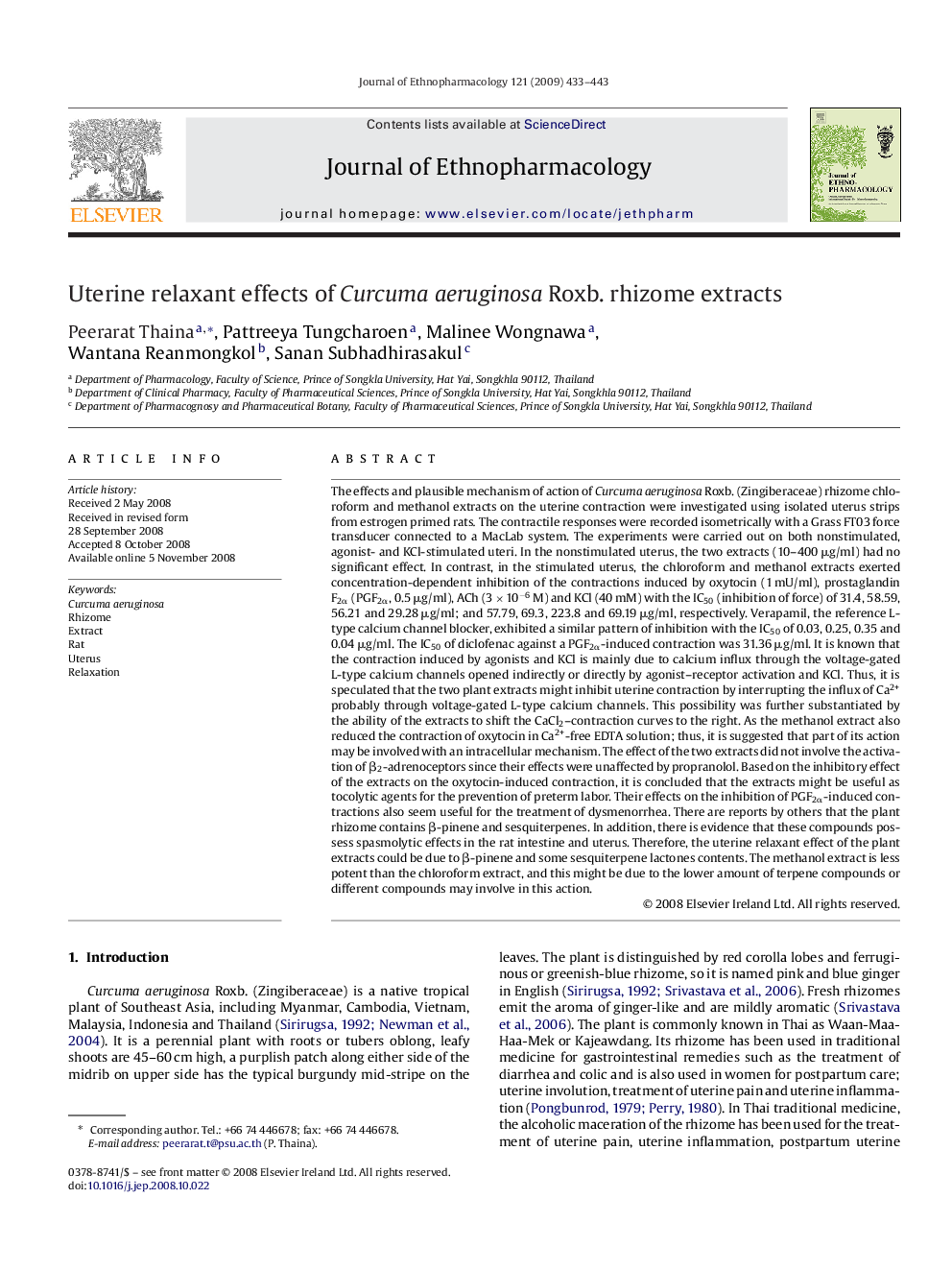| Article ID | Journal | Published Year | Pages | File Type |
|---|---|---|---|---|
| 2547146 | Journal of Ethnopharmacology | 2009 | 11 Pages |
The effects and plausible mechanism of action of Curcuma aeruginosa Roxb. (Zingiberaceae) rhizome chloroform and methanol extracts on the uterine contraction were investigated using isolated uterus strips from estrogen primed rats. The contractile responses were recorded isometrically with a Grass FT03 force transducer connected to a MacLab system. The experiments were carried out on both nonstimulated, agonist- and KCl-stimulated uteri. In the nonstimulated uterus, the two extracts (10–400 μg/ml) had no significant effect. In contrast, in the stimulated uterus, the chloroform and methanol extracts exerted concentration-dependent inhibition of the contractions induced by oxytocin (1 mU/ml), prostaglandin F2α (PGF2α, 0.5 μg/ml), ACh (3 × 10−6 M) and KCl (40 mM) with the IC50 (inhibition of force) of 31.4, 58.59, 56.21 and 29.28 μg/ml; and 57.79, 69.3, 223.8 and 69.19 μg/ml, respectively. Verapamil, the reference L-type calcium channel blocker, exhibited a similar pattern of inhibition with the IC50 of 0.03, 0.25, 0.35 and 0.04 μg/ml. The IC50 of diclofenac against a PGF2α-induced contraction was 31.36 μg/ml. It is known that the contraction induced by agonists and KCl is mainly due to calcium influx through the voltage-gated L-type calcium channels opened indirectly or directly by agonist–receptor activation and KCl. Thus, it is speculated that the two plant extracts might inhibit uterine contraction by interrupting the influx of Ca2+ probably through voltage-gated L-type calcium channels. This possibility was further substantiated by the ability of the extracts to shift the CaCl2–contraction curves to the right. As the methanol extract also reduced the contraction of oxytocin in Ca2+-free EDTA solution; thus, it is suggested that part of its action may be involved with an intracellular mechanism. The effect of the two extracts did not involve the activation of β2-adrenoceptors since their effects were unaffected by propranolol. Based on the inhibitory effect of the extracts on the oxytocin-induced contraction, it is concluded that the extracts might be useful as tocolytic agents for the prevention of preterm labor. Their effects on the inhibition of PGF2α-induced contractions also seem useful for the treatment of dysmenorrhea. There are reports by others that the plant rhizome contains β-pinene and sesquiterpenes. In addition, there is evidence that these compounds possess spasmolytic effects in the rat intestine and uterus. Therefore, the uterine relaxant effect of the plant extracts could be due to β-pinene and some sesquiterpene lactones contents. The methanol extract is less potent than the chloroform extract, and this might be due to the lower amount of terpene compounds or different compounds may involve in this action.
